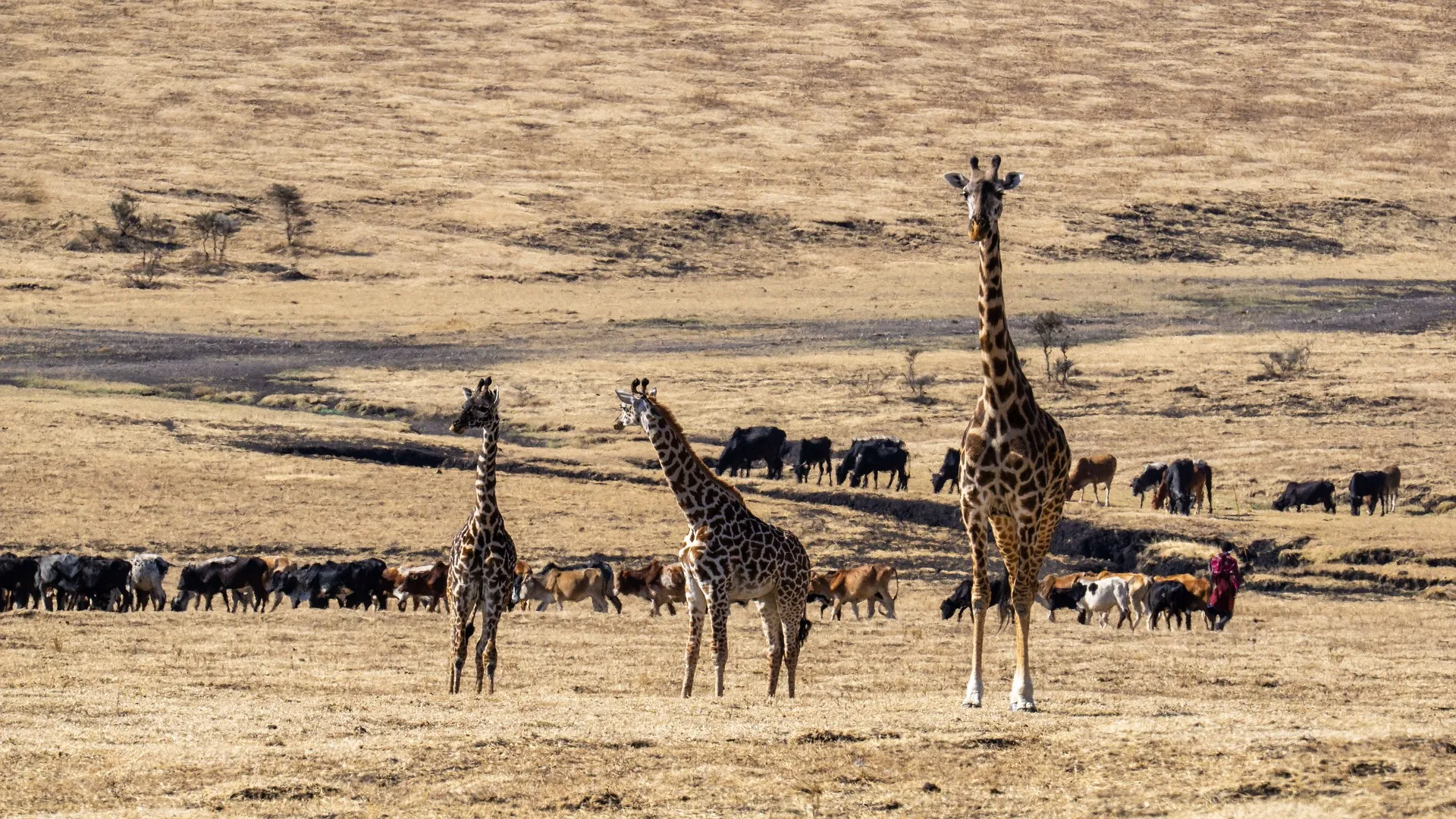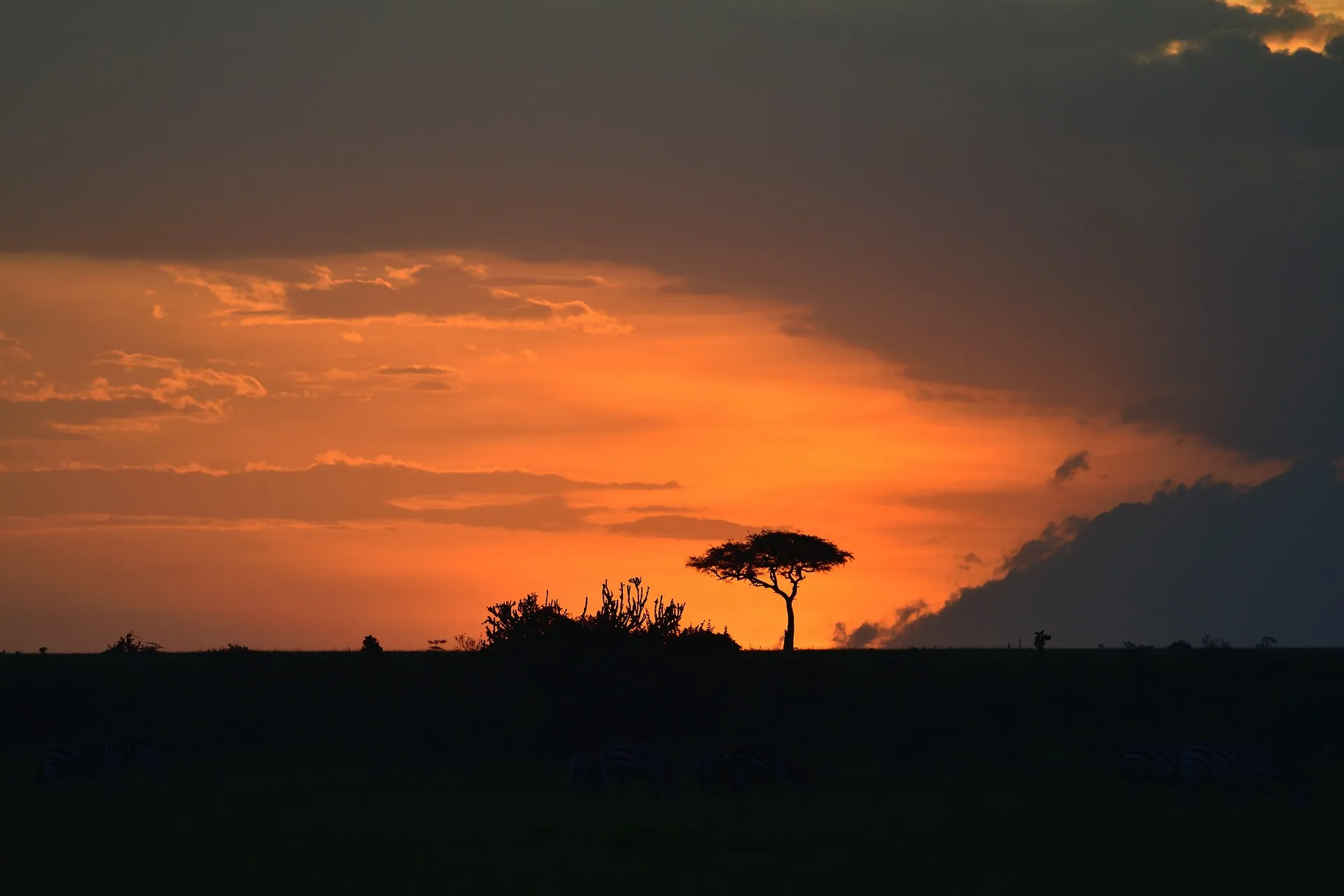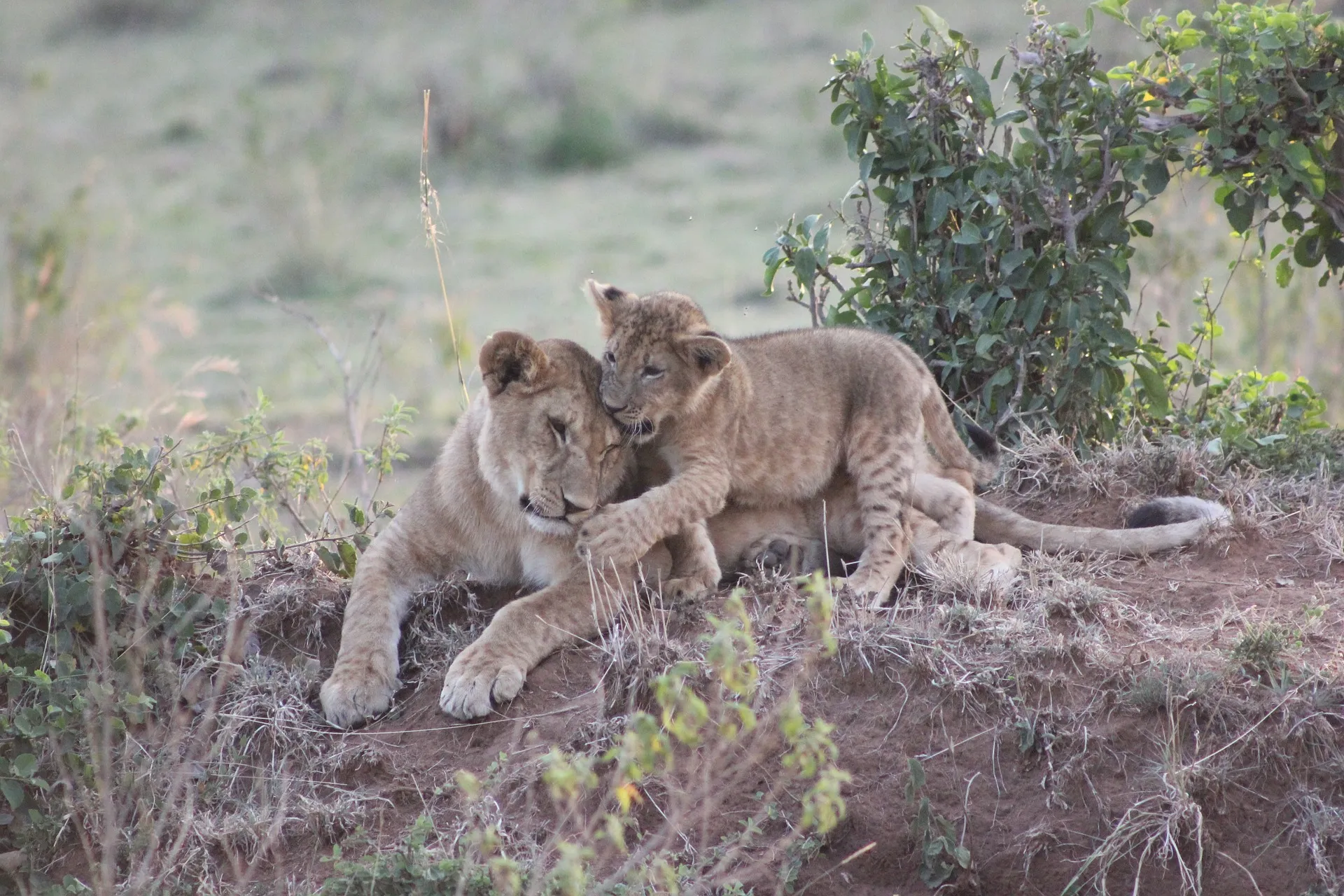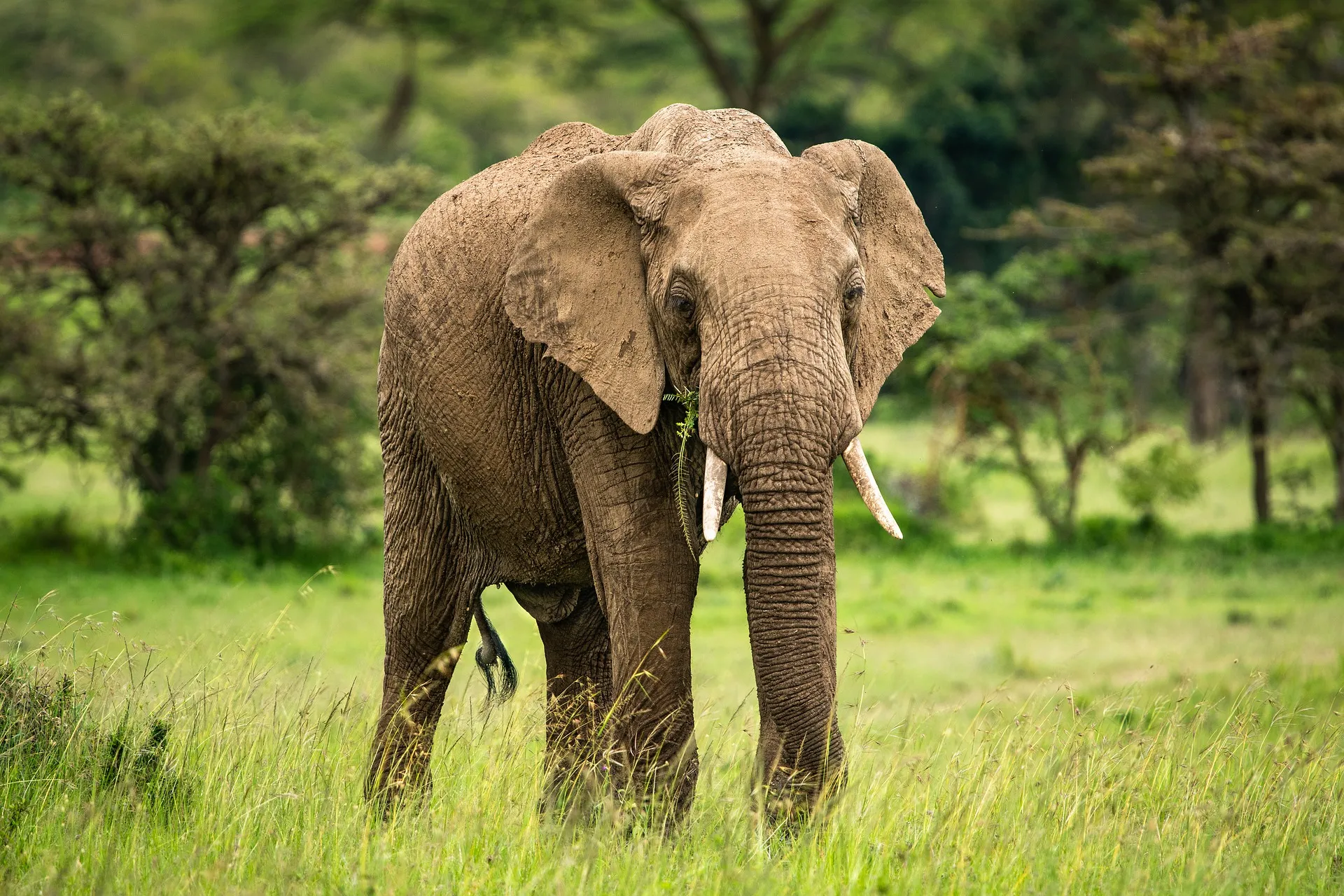Best Guide to Masai Mara Location for Your Next Safari Adventure

Masai Mara location is in southwestern Kenya, next to the Serengeti in Tanzania. This guide covers everything from how to get there to what makes it a top safari destination.
Book Our Masai Mara Game Reserve Now
Are you looking for the best Maasai Mara National Reserve safari? Book your safari with us now to have the best tour. You can book your Masai Mara safari today via +254-748-258-880 or james@ajkenyasafaris.com or safarioffers@ajkenyasafaris.com to book your safari.
Our Most Booked Masai Mara National Park Safari Packages
Our Most Booked Kenya Safari Packages 2025 | Price Per Adult Sharing | The Detailed Itinerary |
From USD 27 | ||
3 Days Masai Mara Safari | From USD 1475 | |
From USD 1715 | ||
7 Days Safari in Kenya | From USD 4283 | |
From USD 6235 |
Key Takeaways
Masai Mara National Reserve in Africa is located in southern Kenya, adjacent to the Serengeti National Park, and is renowned for its incredible biodiversity and the annual Great Migration with Mara River crossing being the peak.
Access to the Masai Mara National Park is facilitated through several key entry points, with options to fly from Wilson airport or drive from Nairobi, enhancing the accessibility for visitors.
The Masai Mara National Reserve is recognized for its conservation efforts, involving local communities in wildlife management and ensuring sustainable tourism practices to protect its ecosystems. Another top effort is the Mara Meru Cheetah Project that plays a Kenya role in Meru and Mara National Parks.
Maasai Mara National Reserve is home to a healthy wildlife population that you will find in its natural habitat like black rhino, spotted hyena, cheetah, wildebeest, lion, and other wildlife.
Masai Mara National Park and the larger Narok county is the home for the Maasai People, the ancestral inhabitants of this land.
The Masai Mara National Reserve was managed by the Narok County Council till 1994 when it was transferred to the Trans Mara County Council. They play a key role in human wildlife conflict resolution and also keep check of the neighboring Mara Conservancy, wildlife sanctuary, Maasai pastoral ranches, and more.

Where is Masai Mara Located?
Nestled in the southern part of Kenya Africa along the Great Rift Valley, the Masai Mara National Reserve spans approximately 1,510 square kilometers (580 square miles) of stunning landscapes and diverse ecosystems. This expansive area is a haven for wildlife, offering visitors the chance to witness the awe-inspiring beauty of Africa’s natural world.
Adjacent to the Serengeti in Tanzania, the Masai Mara’s western boundary is marked by the dramatic Siria/Oloololo Escarpment, creating a seamless connection with one of the world’s most famous wildlife areas. This proximity enhances the ecological connectivity between the two national parks, forming part of the greater Mara-Serengeti ecosystem, renowned for its incredible biodiversity and the annual Great Wildebeest Migration.
The reserve borders the popular great rift valley and the western border is demarcated by the Oloololol Escarpment. It is also known for having many rivers like Mara River and is ideal for wildebeest spotting which moves between Masai Mara and Serengeti National Parks. You will also find lion, leopard, cheetah, buffalo, rhino, and other animals.
How to Get to Masai Mara
Reaching the Masai Mara National Reserve is an adventure in itself, with several travel options available. Most visitors fly into Kenya’s bustling Jomo Kenyatta International Airport in Nairobi before embarking on the journey to the reserve. From Nairobi, you can choose to take a short flight to one of the Masai Mara’s airstrips or opt for a scenic road trip through the Kenyan countryside. Many Masai Mara safari operators offer guided transfers, ensuring a convenient and comfortable journey to the reserve.
The Masai Mara National Reserve boasts several key entry points, each providing access to different areas of the park. Here are the main entry points:
- Sekenani Gate: Located in the northeast, this is one of the most popular entry points, situated approximately 220 kilometers from Nairobi.
- Talek Gate: Serves the eastern sections of the reserve and is about 240 kilometers from the capital.
- Oloololo Gate: For those arriving from the west, this gate provides access to the reserve’s western side and is located roughly 260 kilometers southwest of Nairobi.
For a more direct route, visitors can fly into the Mara Serena Airstrip, which is conveniently located near the Mara Serena Safari Lodge and offers quick access to the heart of the reserve. Whether you choose to fly or drive, the journey to the Masai Mara is a prelude to the incredible adventures that await within its borders.

Masai Mara in Narok County
Situated in Narok County in Africa, the Masai Mara National Reserve forms a key part of Kenya’s Rift Valley Province. This southwestern region of Kenya is renowned for its sprawling savannahs and diverse habitats, making it an ideal location for the reserve. The nearest urban center to the reserve is Narok, a vibrant town that serves as a gateway to the Masai Mara National Reserve.
The Masai Mara’s location near the Tanzanian border significantly enhances its ecological connectivity, linking it seamlessly with the Serengeti Park. This cross-border connection is vital for the movement of wildlife, particularly during the Great Wildebeest Migration, when millions of animals traverse these landscapes in search of fresh grazing grounds.
The vegetation in the Masai Mara primarily consists of open savannah grasslands interspersed with seasonal streams and acacia trees. This diverse flora supports a wide array of wildlife, from the towering giraffes to the stealthy predators that stalk the plains. The reserve’s rich biodiversity and stunning scenery make it a must-visit destination for nature enthusiasts and adventure seekers alike.
Key Entry Points to Masai Mara
Accessing the Masai Mara National Reserve is made easy through several well-established entry points. The Musiara Gate is particularly notable for providing entry to the northern areas of the reserve, including the wildlife-rich Musiara Marsh. This area is renowned for its high concentration of predators, making it a prime spot for wildlife viewing.
Each gate offers a unique entry experience, allowing visitors to explore different sections of the reserve and its diverse habitats. Whether you enter through the Sekenani, Talek, or Oloololo gates, each provides a gateway to the wonders of the Masai Mara and its abundant wildlife.

The Greater Maasai Mara Ecosystem
The Greater Maasai Mara Ecosystem extends beyond the boundaries of the Masai Mara National Reserve, encompassing several conservancies that play a crucial role in wildlife conservation. The Mara Triangle, for instance, is famed for its remarkable landscapes and high concentration of lions and cheetahs, offering some of the best predator sightings in the reserve.
Mara North Conservancy and Ol Kinyei Conservancy provide diverse environments with limited visitor access to protect their wildlife sanctuary. These conservancies collaborate with local Maasai families to ensure sustainable wildlife management and community benefits.
The Lemek Conservancy, though smaller, offers unique experiences such as off-road driving and night safaris. Together, these conservancies form the greater Mara ecosystem, a magnificent mara game reserve that supports a wide range of species and habitats. Visiting these conservancies allows travelers to support critical conservation measures while experiencing exclusive and intimate wildlife encounters.
Major Rivers in Masai Mara
Rivers play a pivotal role in the Masai Mara ecosystem, providing essential water sources for wildlife and supporting lush vegetation. The Mara River is one of the most well-known rivers. It plays a crucial role in the Great Migration and provides essential water for many species. The dramatic river crossings by wildebeests and zebras are a highlight of the migration, attracting predators like crocodiles and big cats.
Other significant rivers include the Sand River and the Talek River, both of which contribute to the intricate water systems within the reserve. These rivers create natural divisions within the Masai Mara, separating different sectors and providing diverse habitats for wildlife.
The riverine forests along these waterways offer shelter and breeding grounds for species such as hippos and crocodiles, making the rivers essential to the health and vitality of the Masai Mara ecosystem.

Wildlife Habitats in Masai Mara East Africa
The Masai Mara is home to a variety of wildlife habitats, each supporting a unique array of species. The open savannahs are perhaps the most iconic, providing a stage for dramatic predator-prey interactions and offering ample opportunities for wildlife viewing. These grasslands are vital for species like cheetahs and lions, which rely on the open terrain for hunting.
In addition to the savannahs, the reserve features acacia-dotted plains that serve as important grazing areas for herbivores such as wildebeests and zebras. The rolling savannahs and acacia woodlands create a picturesque landscape that is quintessentially African.
Riverine forests along the major rivers provide critical habitats for aquatic species and offer shelter for terrestrial animals. These forests are particularly important for species such as hippos and crocodiles, which depend on the rivers for survival. The diverse terrain and varied habitats of the Masai Mara make it a leading safari destination, offering unparalleled wildlife experiences.
Best Time to Visit Masai Mara
The best time to visit the Masai Mara is during the dry season. This period lasts from July to October and coincides with the Great Migration. This period sees over 1.5 million wildebeests, zebras, and other herbivores crossing the Mara River, creating one of nature’s most spectacular events. The dry conditions enhance wildlife visibility as animals gather around permanent water sources, making it easier for visitors to spot them.
Weather during this peak season is generally dry and pleasant, with average daytime temperatures around 77°F (25°C). However, this is also the busiest time of year, with more safari vehicles in the reserve as visitors flock to witness the Great Migration.
For those seeking a quieter experience, the shoulder seasons of June and November can also offer excellent wildlife viewing opportunities for Maasai Mara Kenya.

Accommodation Options in Masai Mara
Masai Mara in East Africa offers a diverse range of accommodation options to suit various preferences and budgets. For those seeking luxury, the Spirit of the Masai Mara and Emboo River lodges provide opulent experiences with stunning views and exclusive amenities. Sentinel Mara Camp, located along the Mara River, offers a more intimate setting with the capacity to host just seven guests.
Mid-range options include Entumoto Safari Camp and Matira Bush Camp, both of which provide comfortable tented accommodations with breathtaking views of the reserve. Tipilikwani Camp, overlooking the Talek River, is another excellent choice for those seeking a balance between comfort and affordability.
For budget-conscious travelers, there are numerous campsites and budget lodges that offer basic amenities without compromising on the Masai Mara safari experience. No matter your preference, the diverse accommodation options in the Masai Mara ensure that every visitor can find a suitable place to stay while exploring this magnificent reserve.
Cultural Significance of the Maasai People
The Maasai community is an integral part of the Masai Mara in Kenya Africa experience, offering visitors a glimpse into their rich cultural heritage. Their identity is deeply intertwined with their livestock, which serves as a crucial source of food and social status. Traditional Maasai clothing and adornments often signify an individual’s social standing and ethnic identity.
The Maasai have a monotheistic belief system centered around a single deity, showcasing their spiritual connection to the environment. Rituals and ceremonies, including cattle ceremonies and rite of passage events, play a significant role in maintaining cultural continuity and community bonds. Additionally, the Maasai’s music and dance are integral to their cultural expressions and celebrations.
Visitors to the Masai Mara can enhance their safari experience by engaging with the Maasai community through village visits and cultural tours. These interactions offer a deeper understanding of the Maasai’s way of life and their enduring connection to the land.

Conservation Efforts in Masai Mara
Conservation is at the heart of the Kenya Masai Mara’s mission, with numerous initiatives aimed at protecting its rich biodiversity. The Mara Conservancy, established in 2001, has played a pivotal role in reducing poaching and enhancing wildlife security. Anti-poaching patrols have significantly increased safety for wildlife, with over 3,415 poachers arrested since its inception.
The Maasai Mara Wildlife Conservancies Association coordinates efforts among twelve independent conservancies, supporting biodiversity and local communities. These conservancies provide income for approximately 3,000 landowners and their families, benefiting around 24,000 individuals. By involving Maasai landowners in conservation measures, these initiatives ensure sustainable wildlife management while respecting traditional practices.
Tourist numbers are limited in each conservancy to minimize environmental impact and preserve wildlife habitats. By visiting the Masai Mara and its conservancies, travelers contribute to crucial conservation efforts that protect this unique ecosystem for future generations.
Why Masai Mara is a Leading Safari Destination
The Masai Mara is renowned for its breathtaking landscapes, diverse wildlife, and unparalleled safari experiences. From rolling hills and expansive savannahs to the dramatic Mara River crossings, the reserve offers a visual feast for nature enthusiasts and photographers alike. Activities such as hot-air balloon rides and 4×4 safaris allow visitors to explore the reserve from different perspectives, adding to the adventure.
Often referred to as the ‘eighth wonder of the world,’ the Masai Mara Game Reserve Kenya is one of the most famous wildlife areas globally, drawing visitors from around the world. Its effective management and conservation measures further enhance its reputation as a leading Masai Mara safari destination, ensuring that the Masai Mara national park remains a sanctuary for wildlife and a haven for travelers.

Summary & FAQs
In summary, the Masai Mara in Kenya Africa offers an unparalleled safari experience, combining stunning landscapes, diverse wildlife, and rich cultural heritage. Its strategic location within the greater Mara-Serengeti ecosystem ensures a seamless connection with the Serengeti Park, enhancing the ecological richness of the region. The best time to visit is during the dry season from July to October, when the Great Migration takes center stage, providing unforgettable wildlife encounters.
Whether you’re seeking luxury accommodations or budget-friendly options, the Masai Mara caters to all preferences, ensuring a memorable stay for every visitor. The Maasai community’s cultural significance, coupled with robust conservation measures, makes the Masai Mara not only a leading tour destination but also a beacon of sustainable tourism. Embark on your Masai Mara adventure and experience the magic of Africa’s wild heart.
1. Where is the Masai Mara National Reserve located?
The Masai Mara National Reserve in Kenya is situated in southern Kenya, adjacent to the Serengeti National Park in Tanzania, along the Great Rift Valley.
2. How can I get to the Masai Mara?
You can get to the Masai Mara by flying into Jomo Kenyatta International Airport in Nairobi and taking a short flight to the reserve’s airstrips, or by opting for a road trip from Nairobi facilitated by safari operators.
3. What is the best time to visit the Masai Mara?
The best time to visit the Masai Mara is during the dry season from July to October, as this period coincides with the Great Migration and provides exceptional wildlife viewing experiences.
4. What types of accommodations are available in the Masai Mara?
In the Masai Mara Kenya, you can choose from luxury lodges, mid-range camps, and budget-friendly options, ensuring there’s something for every preference and budget. Whether you prefer a lavish experience or a more economical stay, you’ll find suitable accommodations.
5. Why is the Masai Mara considered a leading safari destination?
The Masai Mara is a leading tour destination due to its stunning landscapes, incredible wildlife diversity, and unique activities like hot-air balloon rides. Additionally, its strong conservation initiatives and rich cultural heritage greatly enhance its attractiveness to visitors.
6. What makes Masai Mara National Park unique?
Masai Mara National Park in Kenya is known as an animal kingdom with wildlife like big five (white & black rhino, lion, buffalo, elephant, & leopard), big cats (cheetah, leopard, & lion, large herds of wildebeest, and other wild animals calling it home. It is especially unique for its annual migration which sees wildebeest get from Serengeti plains to Masai Mara National Park.
Other attractions in Maasai Mara Kenya include major rivers draining into Mara like Mara river & Sand River, local communities like Maasai community, great rift valley, lush grasslands, acacia trees, diverse species of birds, leopard gorge, Mara conservancy like Mara Triangle, and others.
